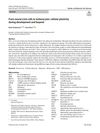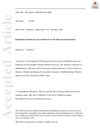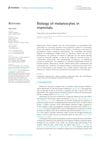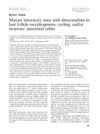Receptor Tyrosine Kinase Kit Action in Skin Melanocytes: Is It Exclusively Cell Autonomous?
August 2015
in “
Experimental Dermatology
”
TLDR KIT's role in skin cells is not entirely independent, as other cells can influence its function.
The document discussed the role of the receptor tyrosine kinase KIT in skin melanocytes and mast cells, exploring whether its action was exclusively cell-autonomous. Studies using Kit mutant mice revealed that the absence of KIT in mast cells led to increased tumor growth and skin pathologies, which could be reversed by transferring normal mast cells. A separate study by Aoki et al. investigated KIT's role in melanocytes using a conditional knock-in mouse model, finding that the absence of KIT in melanocytes resulted in more severe pigmentary defects than expected. This suggested that KIT's function might not be entirely cell-autonomous, as wild-type cells might influence mutant melanocytes. Attempts to rescue the phenotype with additional growth factors were unsuccessful, highlighting the complexity of KIT's role in skin physiology. The studies collectively illustrated different genetic approaches to understanding cellular receptor functions, with implications for further research on KIT's role in various cell types.



